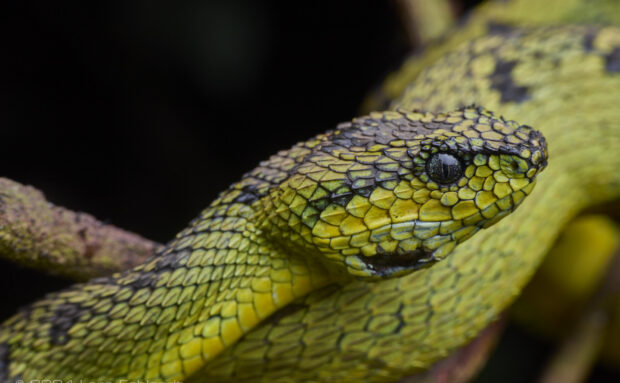
Great Lakes Bush Viper, Atheris nitschei TORNIER, 1902 of the Rwenzori Mountains / Uganda related posts:

Great Lakes Bush Viper, Atheris nitschei TORNIER, 1902 of the Rwenzori Mountains / Uganda related posts:
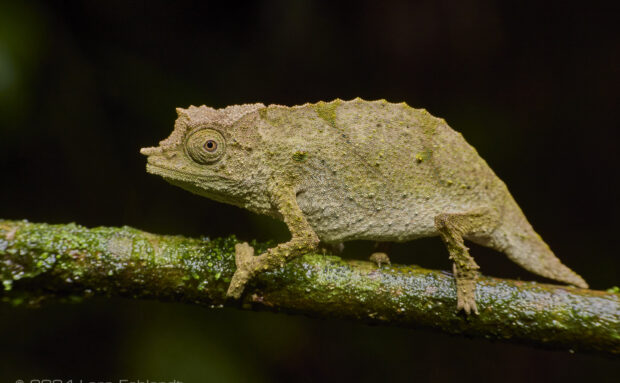
Mountains of the Moon pygmy chameleon, Rhampholeon monteslunae HUGHES, BEHANGANA, TILBURY, DEHLING, KUSAMBA & GREENBAUM in HUGHES et al. 2024 of the Rwenzori Mountains / Uganda related posts:
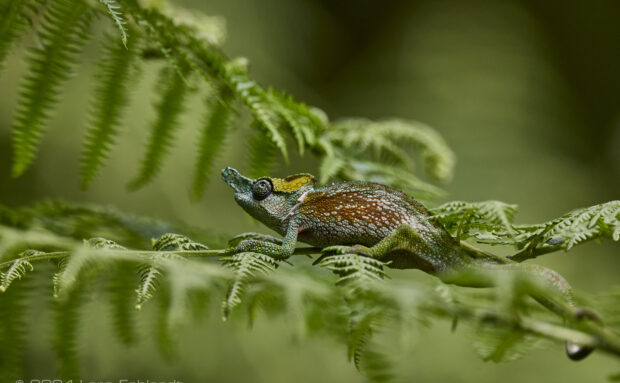
Strange-horned chameleon, Kinyongia xenorhina (Boulenger, 1901) of the Rwenzori Mountains / Uganda related posts:
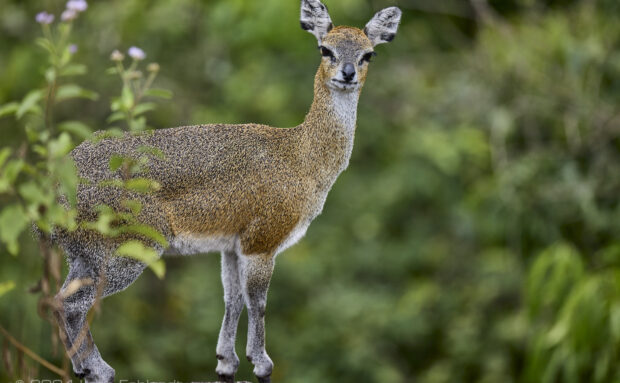
Klipspringer, Oreotragus oreotragus aureus (Zimmermann, 1783) of the Lake Mburo / Uganda related posts:
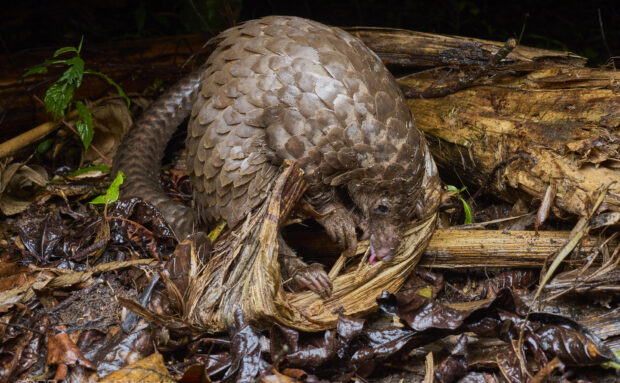
The tree pangolin or also known as the white-bellied pangolin, Phataginus tricuspis mabirae (Rafinesque, 1821) of Uganda – Bwindi The white-bellied pangolin is rare because it is severely threatened by illegal trade and habitat loss. Its scales are used in…
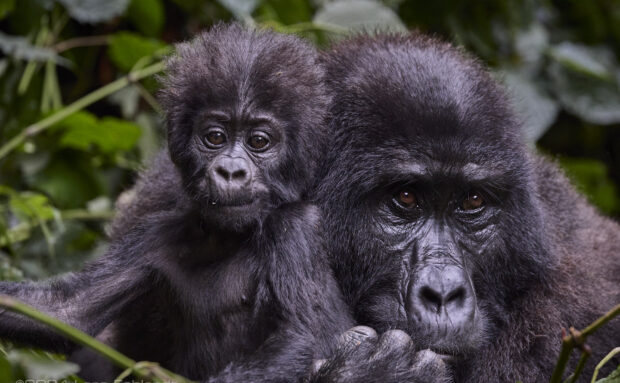
Mountain Gorilla, Gorilla beringei beringei Matschie, 1903 of the Rushegura family in Uganda – Bwindi Encountering mountain gorillas in Uganda is an extraordinary experience, offering a glimpse into the lives of one of the world’s most endangered species. Found primarily…
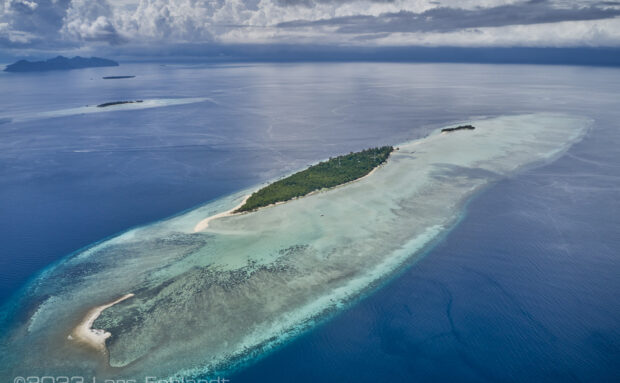
Eine längst überfällige Reise in ein Inselparadies. Kein Regenwaldabenteuer, sondern eine touristische Reise in den äußersten Osten Borneos. Nach vielen Jahren, die ich in Borneo verbracht habe, fällt es mir schwer zu glauben, dass ich nie die Gelegenheit hatte, die…

Die Rückreise während der SARS CoV2 Pandemie. Ein Virus aus China hat das alltägliche Leben weltweit lahmgelegt, auch Borneo blieb davon nicht verschont. Dieser Blogeintrag unterscheidet sich maßgeblich von allen anderen „Abenteuern“ die ich bisher schriftlich veröffentlicht habe. Das Reisen…
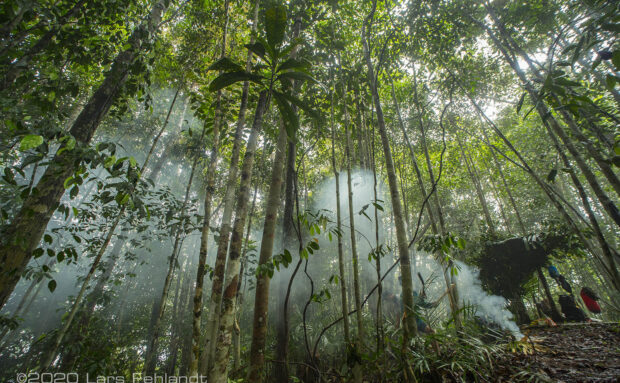
Wilden Orang Utans auf der Spur. Es war im Dezember 2019, als ich die Chance erhalten sollte, ein Regenwaldreservat zu besuchen. Dieses etwa 256km² große Gebiet an der Grenze zu Kalimantan, dem indonesischen Teil Borneos, ist zu 98% von Primärwald…
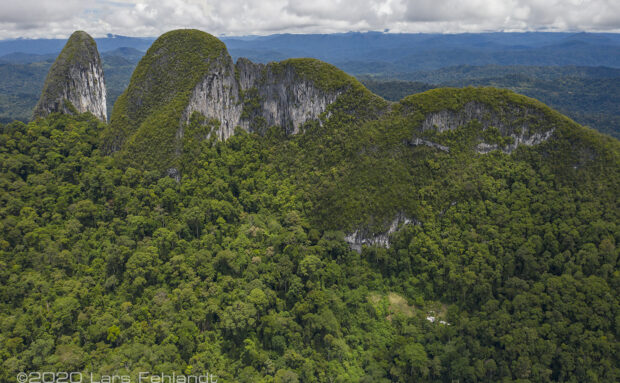
Eine Expedition zu den abgelegenen Turmkarst-Gebieten in Zentralborneo. Bei der folgenden wissenschaftlichen Expedition muss ich ein bisschen vorweg greifen, denn den Kontakt zum Besitzer dieser Hütte erhielt ich nur, weil ich vor zwei Jahren eine Expedition in ein ganz anderes…
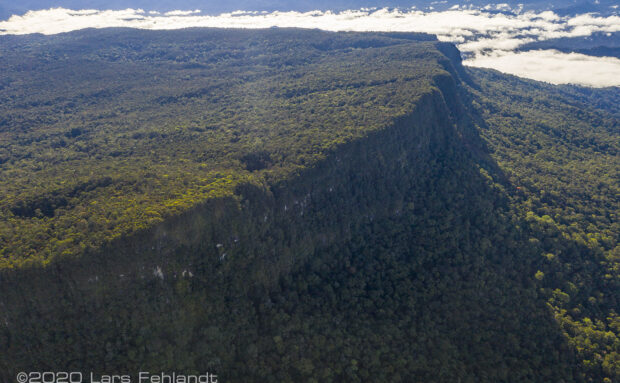
Ein Hochplateau in Zentralborneo – Sarawak Eine wissenschaftliche Expedition zu einem Hochplateau in Zentralborneo erwies sich schwieriger als gedacht. Schon die Straßen dorthin zeigten meiner Gruppe und mir, dass es in den nächsten Tagen nicht einfacher werden würde. Viele Straßen,…
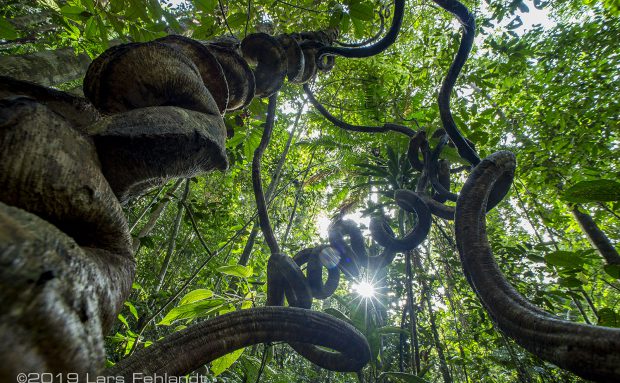
Flora in einem kleinen Nationalpark in Sarawak. Lianen und andere Kletterpflanzen sind sehr wichtige ökologische und strukturelle Bestandteile eines guten Waldes und es lohnt sich immer, ein Foto von ihnen zu machen. Lianen stützen ihren eigenen Körper nicht, sondern verwenden…
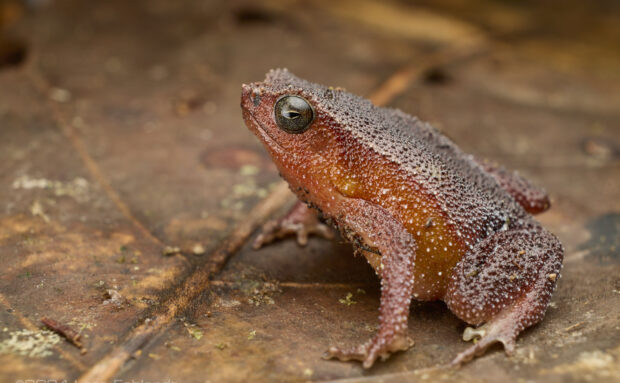
A new species of sticky frog, Kalophrynus sp. “new” Borneo It is not often that you find an animal of which you immediately know ‘this is a new species’. But every now and then luck favours you and all the…
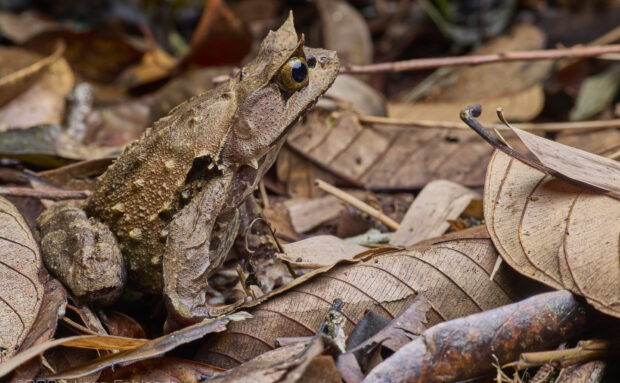
Kobayashi’s horned frog, Pelobatrachus kobayashii Malkmus and Matsui, 1997 from Sabah / Borneo. A few years ago, I had the chance to photograph the rare Pelobatrachus kobayashii. Nevertheless, I wanted to find and photograph this very impressive and very large…
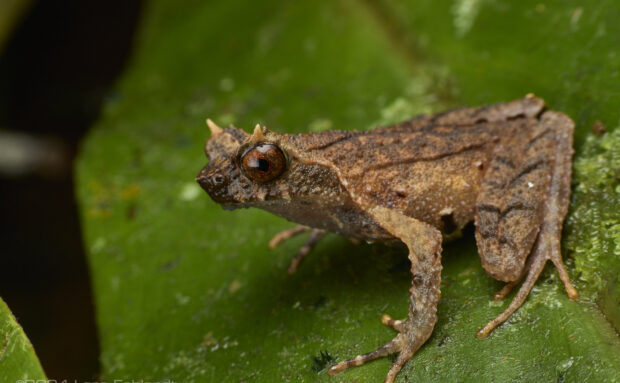
Dring’s horned toad or Dring’s horned frog – Sarawakiphrys dringi (Inger, Stuebing and Tan, 1995) of central Sarawak / Borneo (new location) Sarawakiphrys dringi from a new location in central Sarawak / Borneo – around 1800m ASL. This species was…
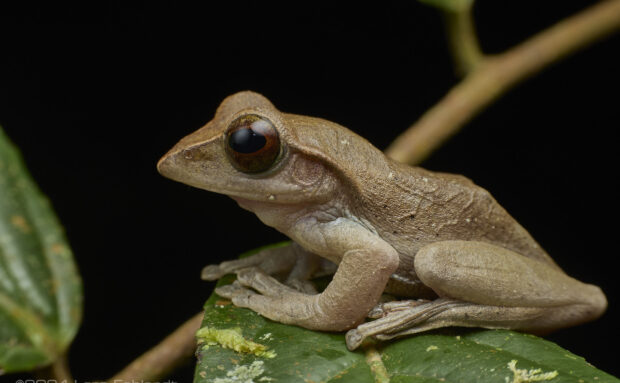
Malaysian flying frog or red-legged frog, Leptomantis rufipes (Inger, 1966) of south Sarawak around 1000m ASL related posts:
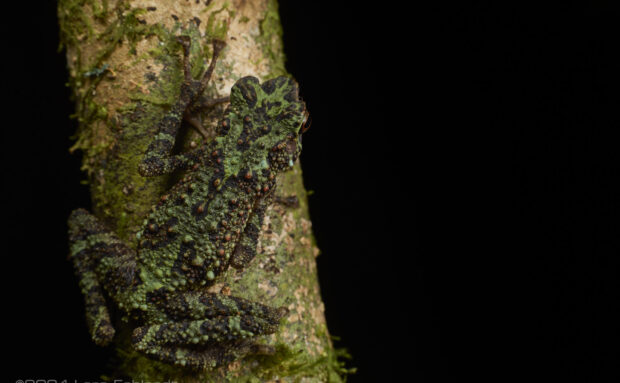
Ansonia latidisca Inger, 1966 (Sambas Stream Toad or Rainbow Toad) I haven’t found these rainbow toads for a few years now, but this year I finally had luck again. Although I had been to the habitat a few times this…
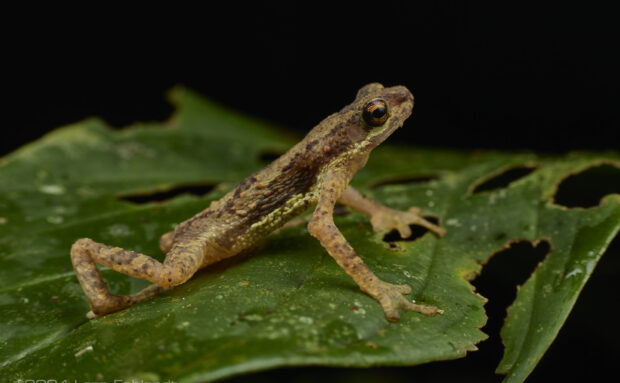
Penrissen dwarf toad, Pelophryne penrissenensis Das, 2008 of Sarawak / Borneo, 2105m ASL related posts:
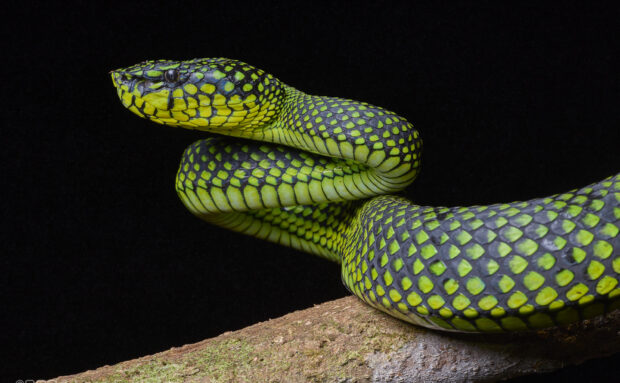
Malcolm’s pitviper, Trimeresurus malcolmi Loveridge, 1938 – of Sabah / Borneo Trimeresurus malcolmi is probably considered the ‘holy grail’ among the pit vipers in Borneo, not least because this viper only occurs above 1000m ASL. There are local reports that…
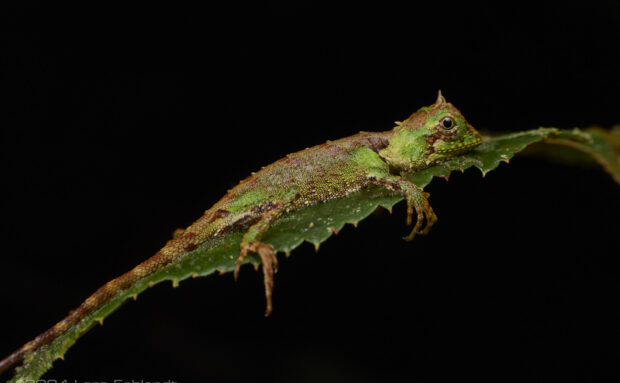
Sarawak Eyebrow Lizard – Pelturagonia spiniceps (Smith, 1925) of central Sarawak / Borneo around 1900m ASL Synonym: Phoxophrys spiniceps Smith, 1925 Once again a range extension for this species. I was able to find this induviduum on a previously unclimbed…

Borneo groundsnake or Borneo Frog-eating Snake, Stegonotus borneensis INGER, 1967 – from south Sarawak / Borneo These individuals are dividing the herpetological community. Some say it is a juvenile Stegonotus borneensis, while others believe it is a Lycodon species. It…
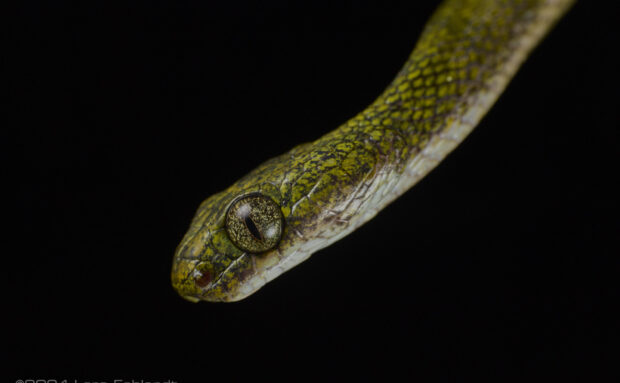
White-spotted cat snake Boiga drapiezii (H. Boie in F. Boie, 1827) – from south-Sarawak / Borneo highland around 1100m ASL related posts:
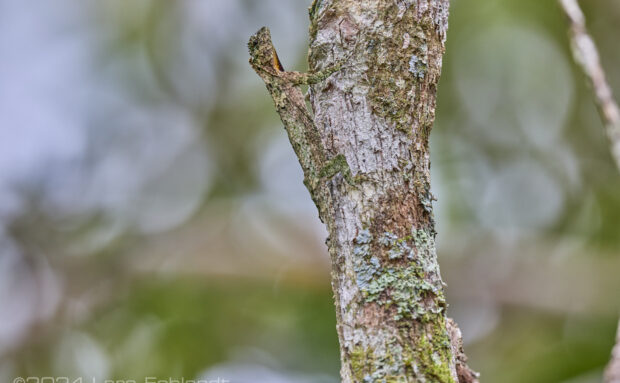
A male of the Fringed Flying Dragon, Draco fimbriatus KUHL, 1820 of central Sarawak / Borneo – around 1200m ASL This draco was high up in the tree, which is why it is difficult to identify it precisely. Normally I…
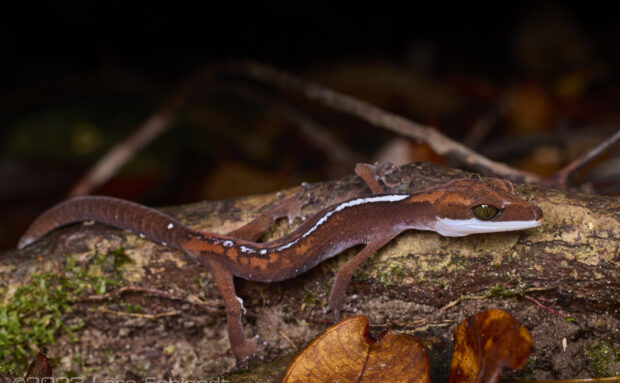
Cat gecko – Aeluroscalabotes felinus Günther, 1864 – of south Sarawak / Borneo – around 200m ASL Aeluroscalabotes felinus Günther, 1864 is named after its habit of curling its tail like a cat when resting. These geckos are very common…
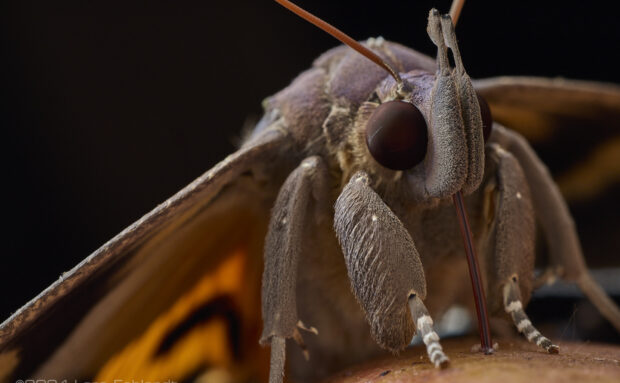
Fruit-piercing moth of the Eudocima Billberg, 1820 genus – central Sarawak / Borneo around 400m ASL The fruit-piercing moth genus Eudocima is a striking moth known for its vivid hindwings and mischievous eating habits. Unlike most nectar-feeding moths, Eudocima moths…
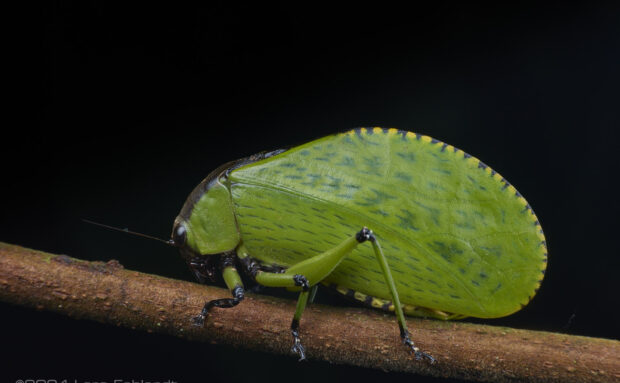
Hard-shelled katydid Dysmorpha obesa Brunner von Wattenwyl, 1878 of central Sabah / Borneo – 200m ASL related posts:
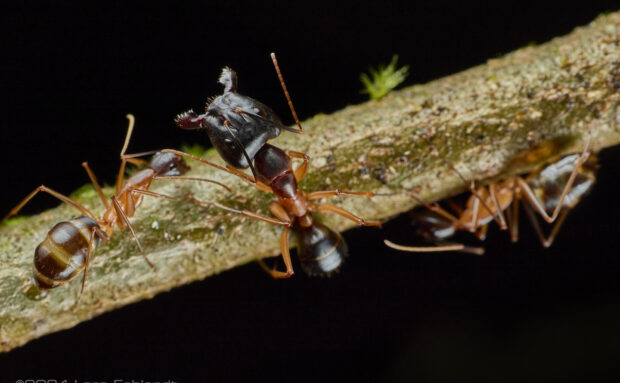
Camponotus festinus (Smith, F., 1857) – Slim Carpenter Ants of the Tanaemyrmex subgenus in central Sarawak – 400m ASL related posts:
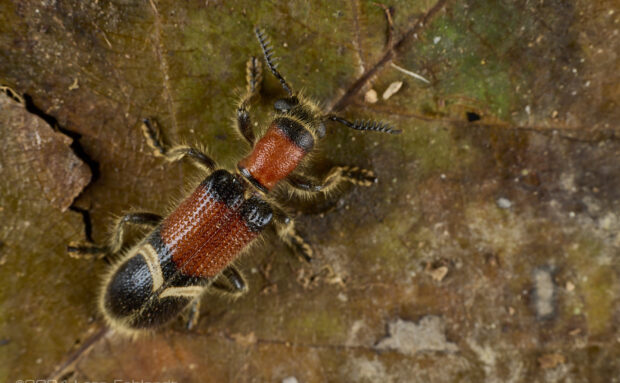
Checkered beetle, Thanasimus sp. (?) (Coleoptera -> Cleridae -> Clerinae) central Sarawak / Borneo (1400m ASL) related posts:
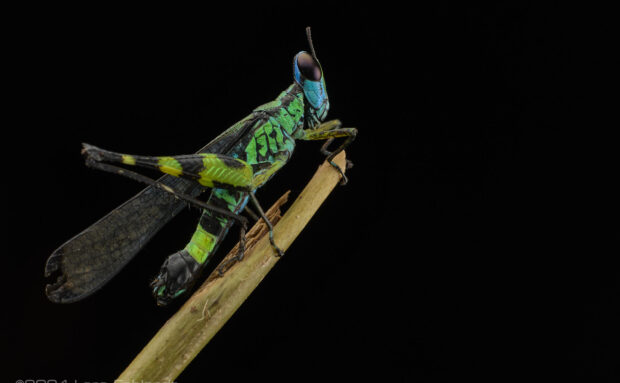
Monkey grasshopper, Erucius sp.(?) of central Sarawak / Borneo (1400m ASL) related posts:
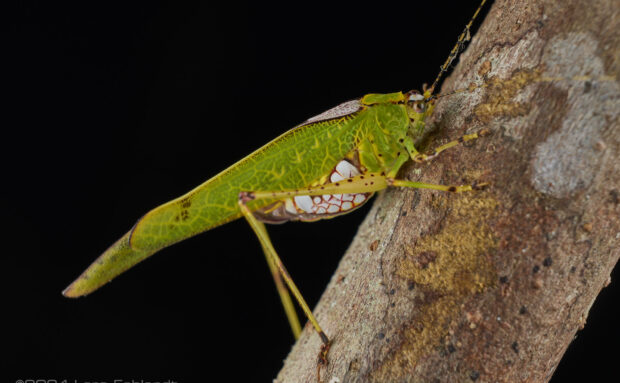
Deflorita integra Ingrisch, 1998 of central Sarawak / Borneo – 1300m ASL related posts:
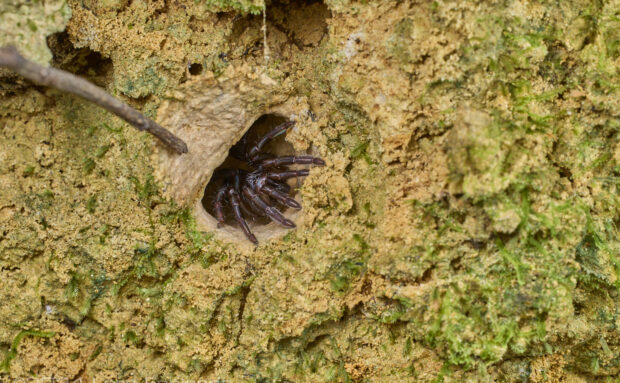
Brushed trapdoor spider, Barychelidae family of Sarawak / Borneo around 200m ASL – probably Rhianodes sp. – I only discovered this trapdoor spider by accident on the edge of a cliff in the forest, as it only looked out of…
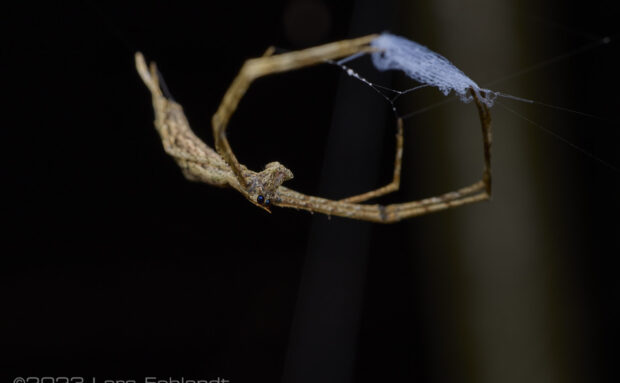
Net-casting spiders Deinopis sp. from Sarawak / Borneo around 100m ASL – Deinopis Macleay, 1839 – Deinopidae of Borneo, commonly known as Ogre-faced Spiders or Net-casting spiders, because of their ability to cast silken nets at their prey. The posterior…
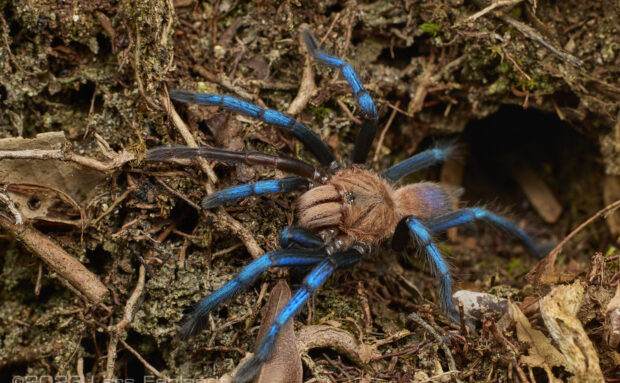
Birupes simoroxigorum (Theraphosidae), of south Sarawak, Borneo. I haven’t seen this Birupes simoroxigorum in a while. But since Chien, Pearl and I discovered and first photographed this species we have been able to record this beautiful blue tarantula at more…
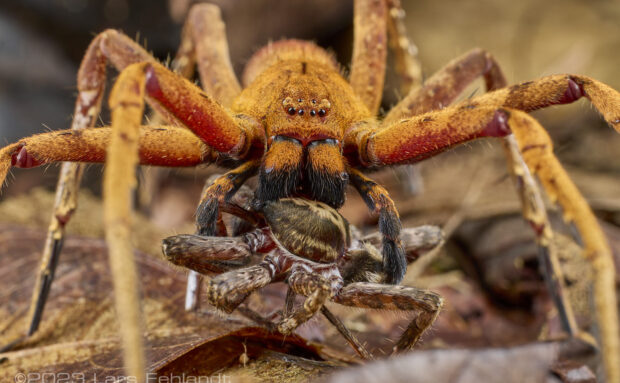
Giant orange Huntsman Spider – Heteropoda sp. of south Sarawak. This Heteropoda sp. is quite widespread in Borneo’s lowland rainforests and is a typical inhabitant of deciduous litter, it is very rare to find this species on trees. As you…
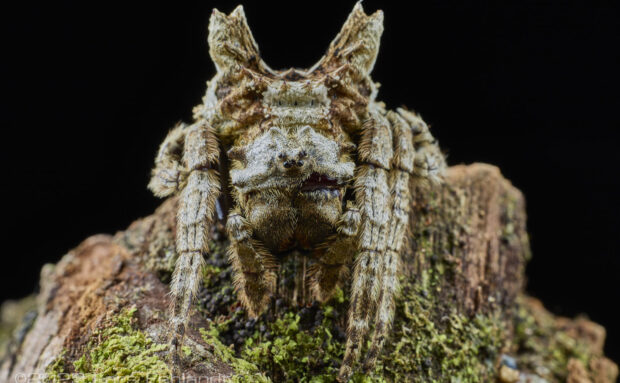
Undetermined spider, probably from the genus Poltys – Poltys cf. illepidus? C. L. Koch, 1843, from central-Sarawak / Borneo Polty’s spiders weave a large web, in case of danger they immediately flee to an anchor point of the web and…
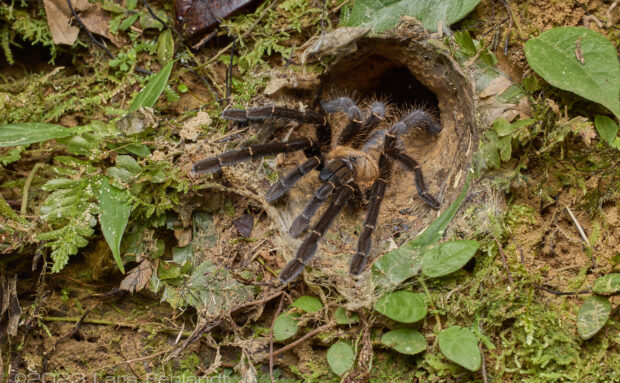
Theraphosidae (Tarantulas) Selenocosmia spec. (Phlogiellus spec. ?) Ulu Ai from Borneo. In the forests of Borneo there are a large number of spider species, many of which are very difficult to identify while others are still not taxonomically classified. So…
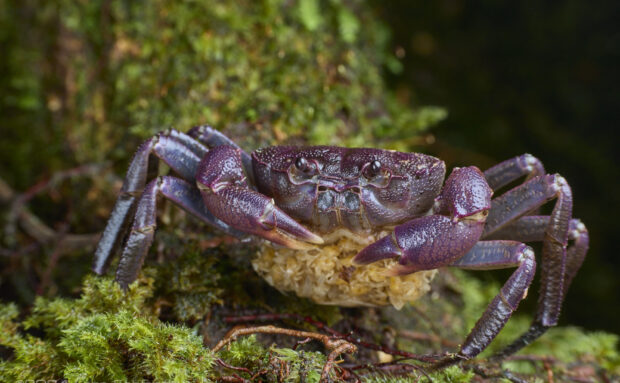
Arachnothelphusa cf. merarapensis from central Sarawak / Borneo – around 1600m ASL We already knew from the crab genus Arachnothelphusa that they must have a direct development. This in-situ photo now clearly shows for the first time that this is…
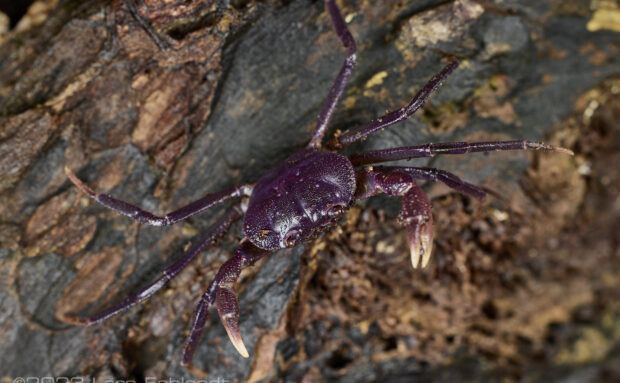
Arachnothelphusa sp. lowland from Sabah / Borneo I found an Arachnothelphusa species in Tawau almost 6 years ago, but it was in the highlands at a altitude of over 1000 m. Either there are two species here, or this Arachnothelphusa…
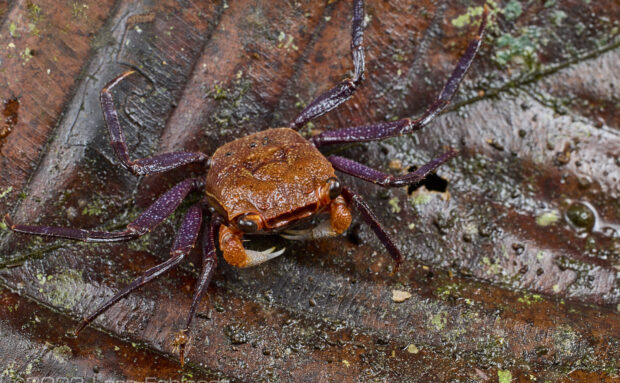
Sabah vampire crab, Geosesarma sabanus Ng, 1992 – of Sabah / Borneo around 100m ASL. related posts:
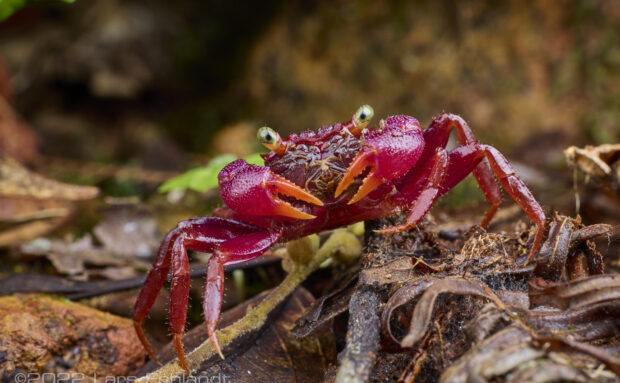
Lars’s vampire crab, Geosesarma larsi Ng & Grinang, 2018 – of south Sarawak around 715m ASL. Since I last visited the habitat of G. larsi in 2017, I have now made my way back to the habitat over five years…
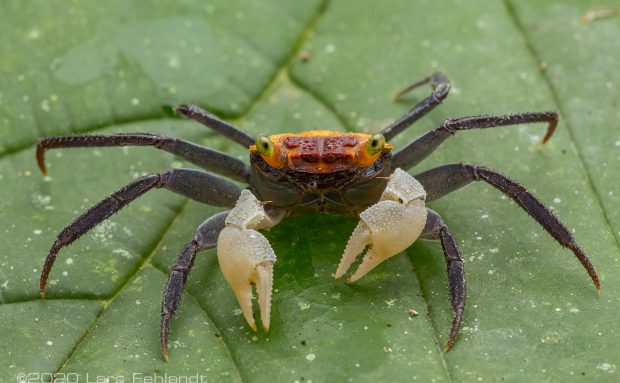
Vampire crab, Geosesarma gracillimum (De Man, 1902) – of central Sarawak, 30m ASL related posts:
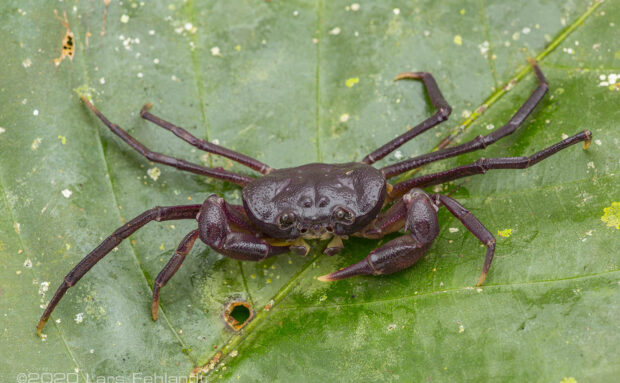
Arachnothelphusa sp. “Baram” of Baram-Area, Sarawak/ Borneo related posts:
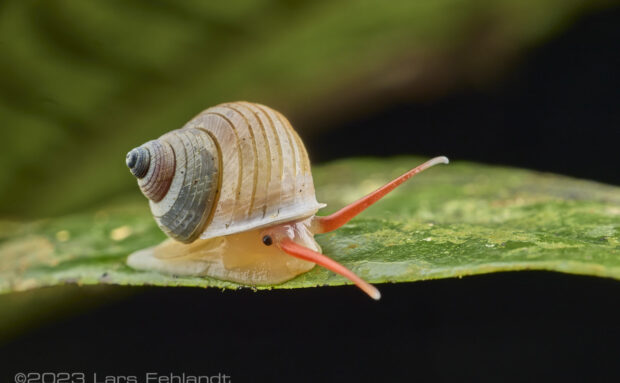
Leptopoma vitreum, Leptopoma sericatum or related species of the family Cyclophoridae – Sarawak/Borneo All Leptopoma snails have gills and an operculum. related posts:
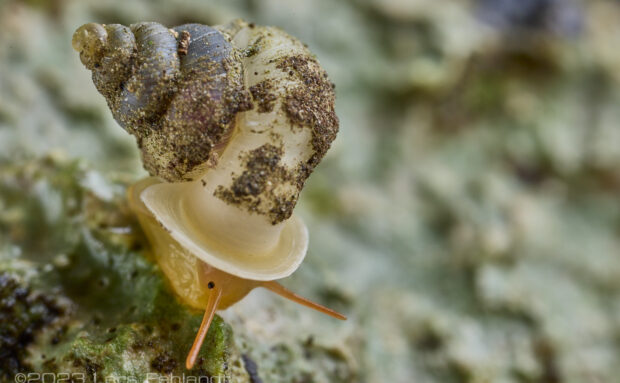
Stomacosmethis hosei (Godwin-Austen, 1889) of south-Sarawak Borneo. The specimen in the photo has a shell length of 5mm. These small snails appear to be adapted primarily to Limestone Hills. related posts:
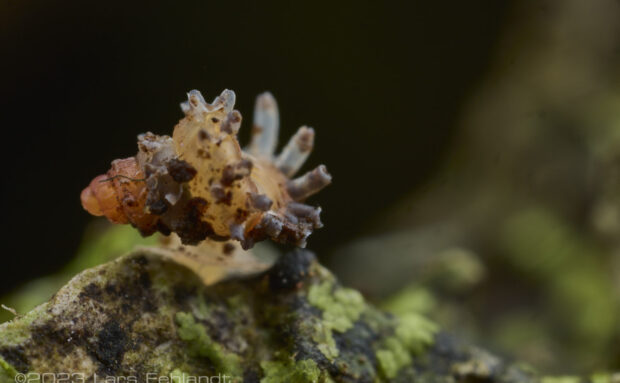
Plectostoma everetti (E. A. Smith, 1893) of South-Sarawak Borneo. The specimen in the photo has a shell length of 1.5mm. Plectostoma everetti within the Plectostoma genus of air-breathing land snails in the family Diplommatinidae which is a family of small…
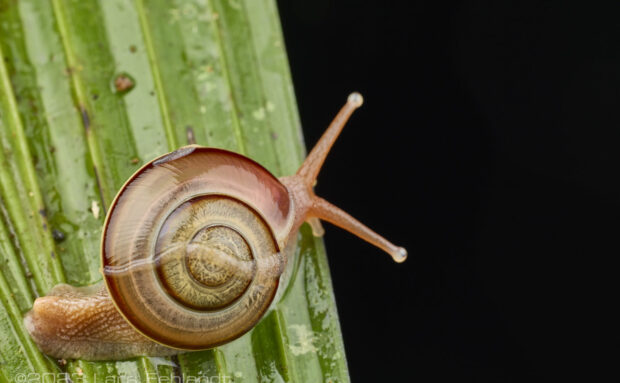
Ariophantid Snail, Vitrinula glutinosa (Metcalfe, 1852) of Central-Sarawak / Borneo Vitrinula glutinosa was described as Helix glutinosa in 1852 by William Metcalfe, who had received the snail shells in November 1850 from the British geologist William John Hamilton. Clearly visible…
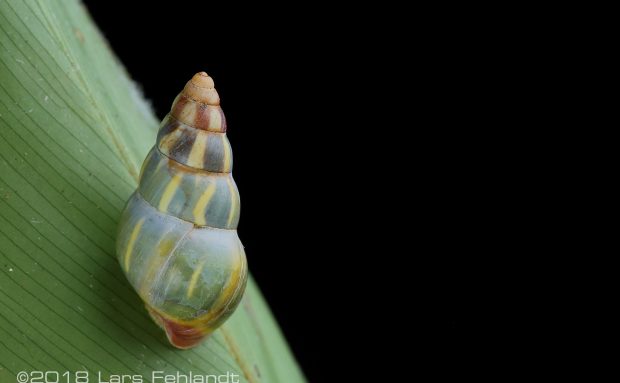
Amphidromus adamsi pictus (Fulton, 1896) or Amphidromus pictus concinnus Fulton, 1896 (?) from West-Sarawak Borneo. related posts:
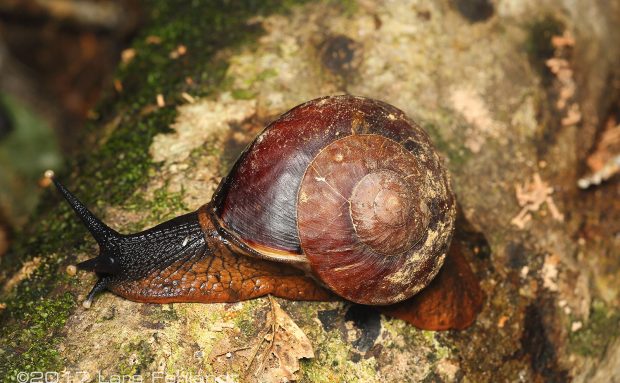
Brooke’s Bertia snail Bertia brookei (Adams & Reeve, 1848), from central Sarawak, 500m ASL related posts:
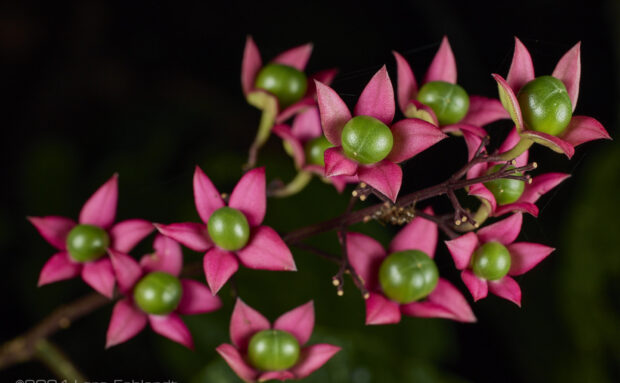
Glory Bower, Clerodendrum sp., of central Sarawak / Borneo around 400m ASL related posts:
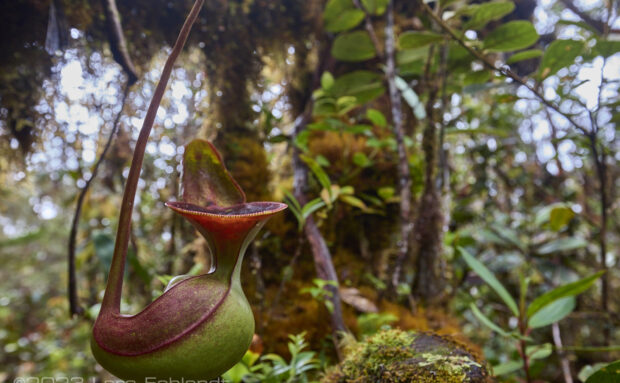
Low’s pitcher-plant, Nepenthes lowii, of north Sarawak / Borneo around 2100m ASL Upper pitchers of Nepenthes lowii, which is a carnivorous plant from the genus pitcher plants (Nepenthes). It was first described around 1859 by botanist Joseph Dalton Hooker. The…
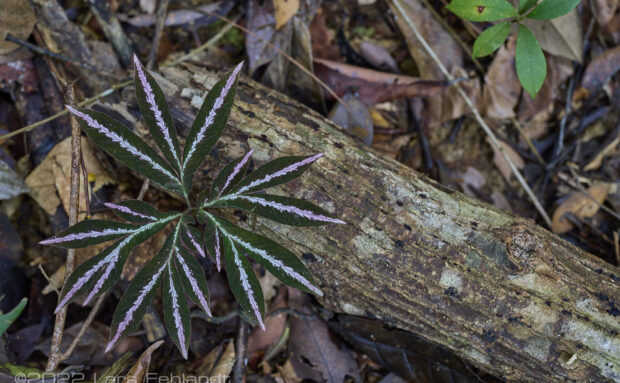
Amorphophallus pendulus Bogn. & Mayo – in situ – south Sarawak / Borneo. related posts:
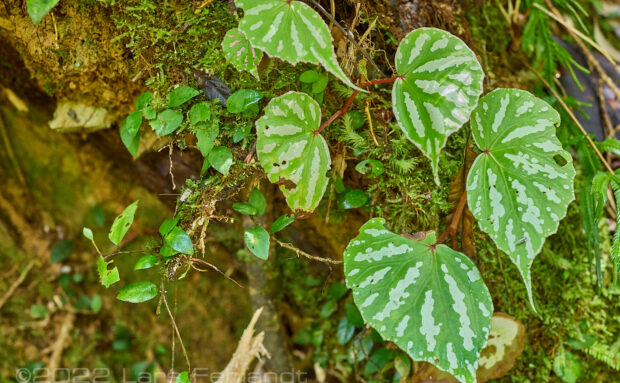
Begonia acidulenta S.Julia & Kiew – in situ – central Sarawak / Borneo. related posts:
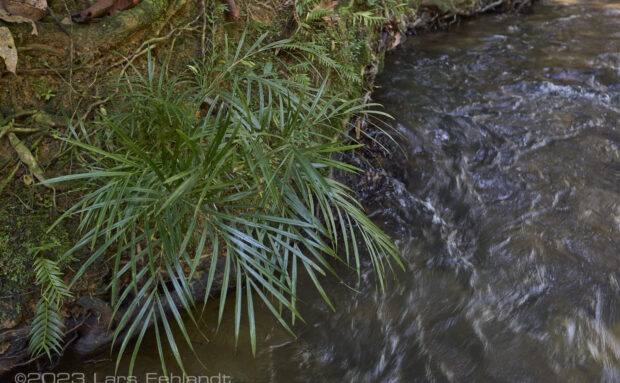
Pinanga tenella Scheff. – in situ – central Sarawak / Borneo. Pinanga tenella is a rheophyte species, it grows mainly on medium-sized rivers with strong currents. Compared to other Pinanga species it has very narrow leaves. These allow it to…
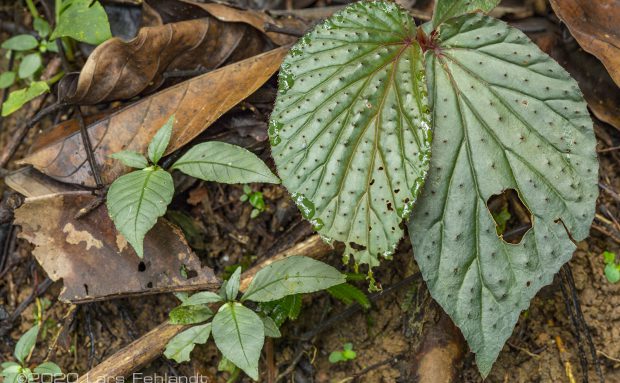
undescribed Begonia – Begonia spec. in situ – central Sarawak / Borneo. related posts:
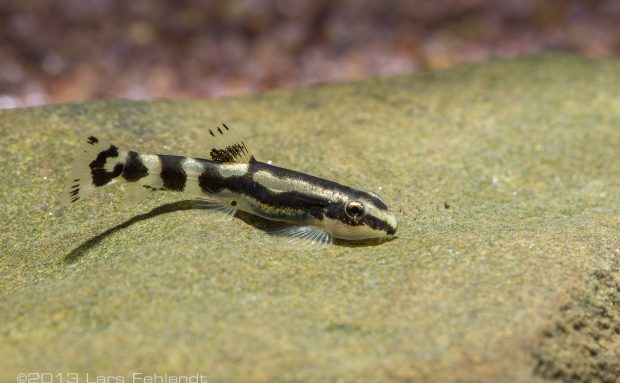
Yaoshania pachychilus (Chen, 1980) related posts:
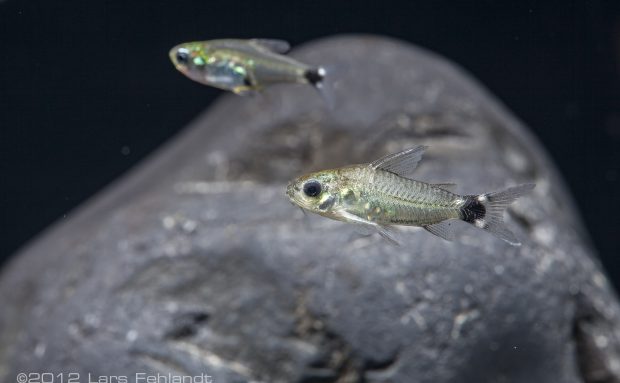
Corydoras hastatus Eigenmann & Eigenmann, 1888 related posts:
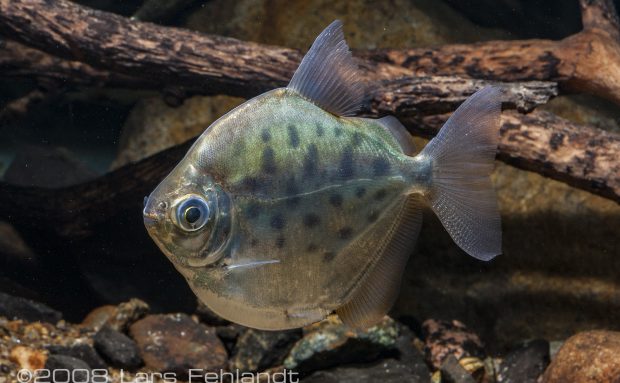
Spotted metynnis – Metynnis maculatus (Kner, 1858) related posts:
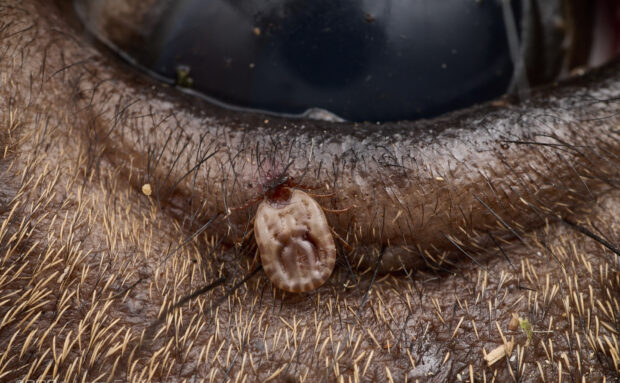
Amblyomma is a genus of hard ticks (Ixodidae). It is found worldwide, with most species occurring in the New World. Some species can transmit infectious diseases as a vector, including Rocky Mountain spotted fever to humans and tularaemia, anaplasmosis and…
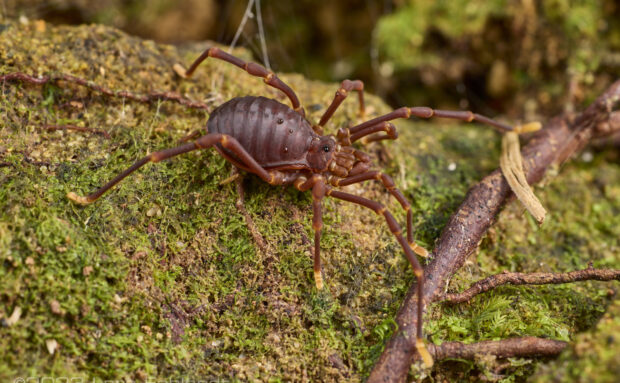
Gnomulus sp.a harvestman from the genus Gnomulus Thorell, 1890, of south Sarawak Borneo – around 150m ASL. related posts:
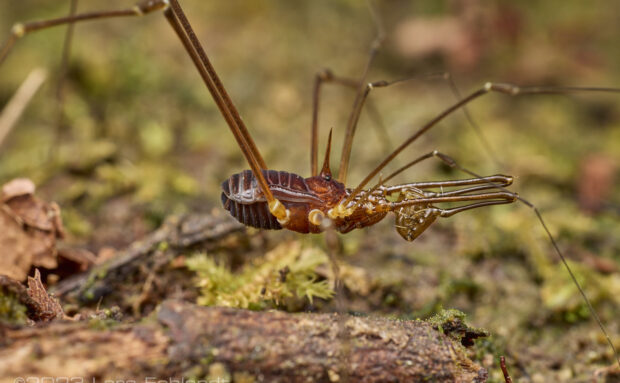
A harvestman from the genus Epedanidae Sørensen, in L. Koch 1886, of south Sarawak Borneo. related posts:
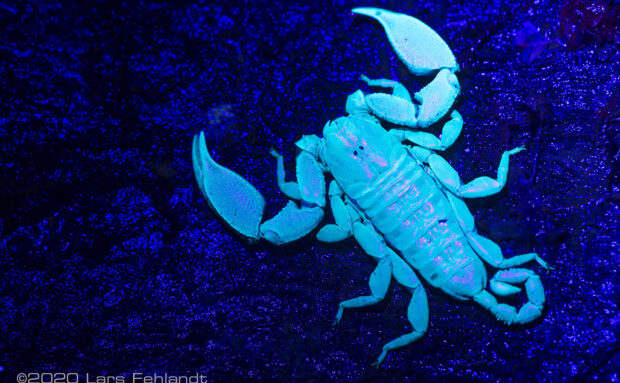
Dwarf Wood Scorpion Liocheles australasiae (Fabricius, 1775), of central Sarawak Borneo, under UV-light. Most scorpions glow a blue-green color when illuminated by ultraviolet light with a wavelength of around 380nm. related posts:
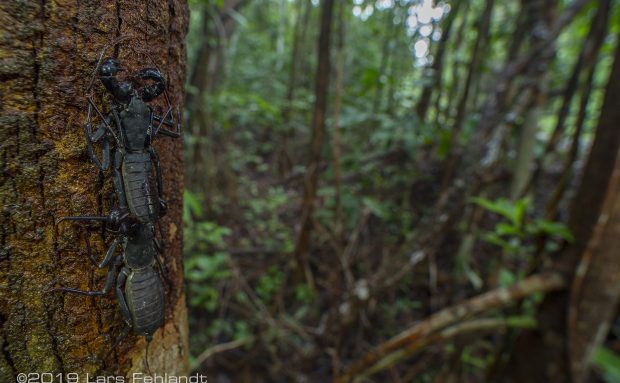
Whip-Scorpion, Thelyphonus borneensis Kraepelin, 1897 – of Sarawak / Borneo Have a look at this in situ shot of Thelyphonus borneensis, whip scorpions or vinegaroons are members of the Uropygi order and the foreplay is not that easy like in the…
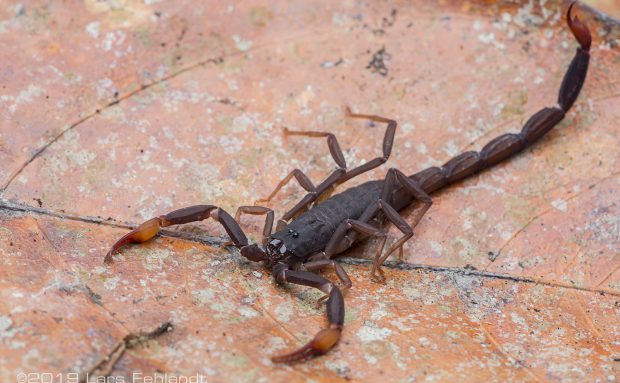
Bark Scorpion Lychas sp., from east Sarawak Borneo probably Spelaeolychas hosei (Pocock, 1891) related posts:
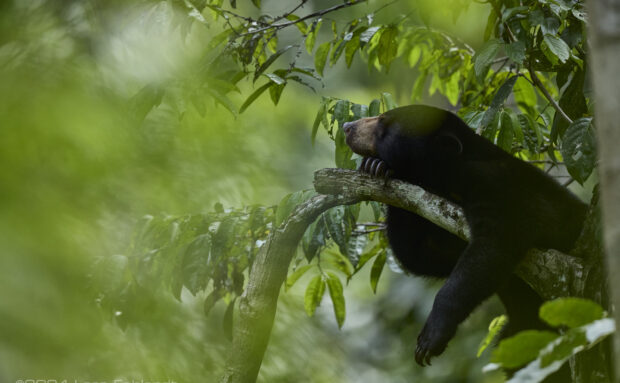
Bornean sun bear, Helarctos malayanus euryspilus Horsfield, 1825 of Borneo The sun bear is the smallest and best adapted to a tree-dwelling lifestyle within the Ursidae. Sun bears are nocturnal, during the day they sleep in the trees, around 2…
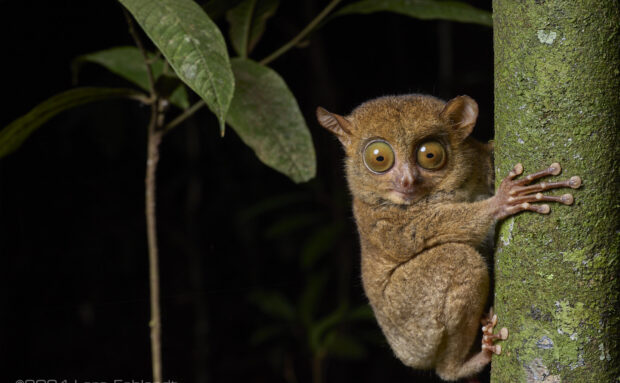
Horsfield’s tarsier, also known as the western tarsier, Cephalopachus bancanus (Horsfield, 1821) of south Sarawak / Borneo I don’t know which animals are my favourites, but these little creatures of the rainforest definitely occupy a top place in my personal…
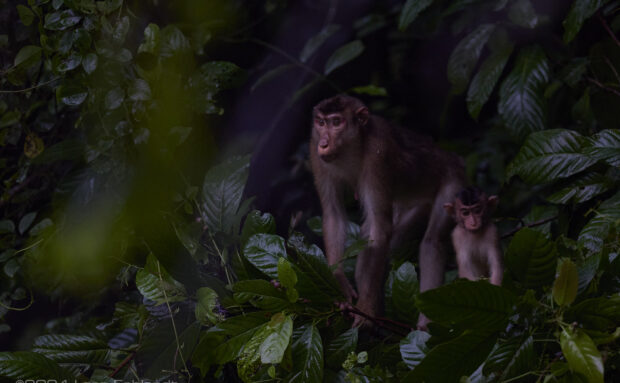
Long-tailed macaque, Macaca fascicularis Raffles, 1821 from Sabah / Borneo – Kinabatangan. Anyone of us who has ever been to Borneo has seen the long-tailed macaques more than once. In some national parks, they are even animals you don’t want…
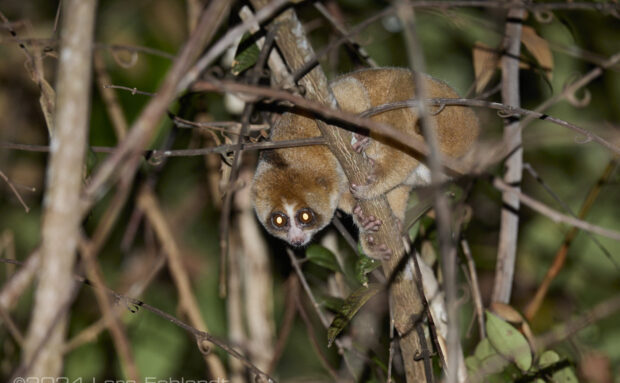
Philippine slow lori, Nycticebus menagensis (Lydekker, 1893) of central Sarawak, around 1280m ASL. Right next to a logging road, this Slow Lori climbed through the branches. In the area where I was traveling I was hoping for Nycticebus kayan (Kayan River…
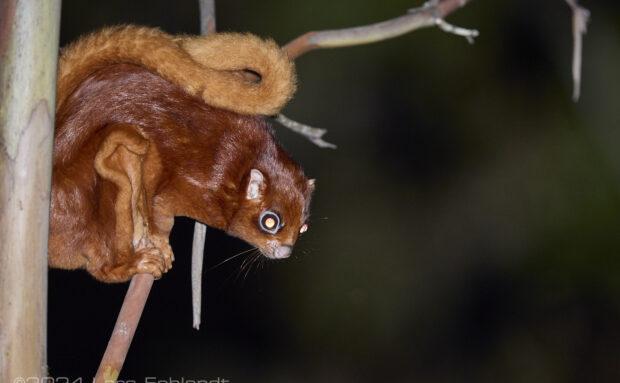
The endemic Thomas’s flying squirrel, Aeromys thomasi (Hose, 1900) of central Sarawak, around 1200m ASL. Locally, Aeromys thomasi can be very common, in some areas even more common than the red giant flying squirrel (Petaurista petaurista). The Thomas’s flying squirrel…
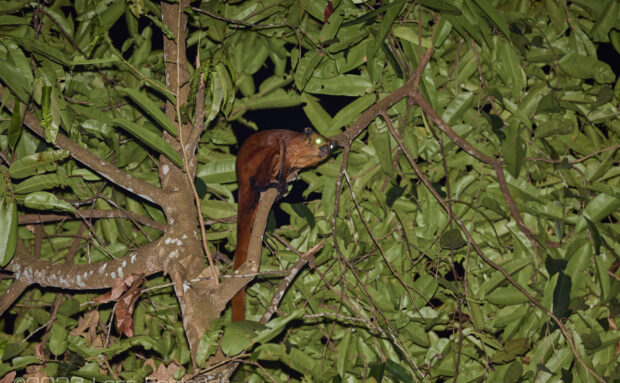
Red giant flying squirrel or common giant flying squirrel, Petaurista petaurista (Pallas, 1766) of south Sarawak, around 200m ASL. related posts:
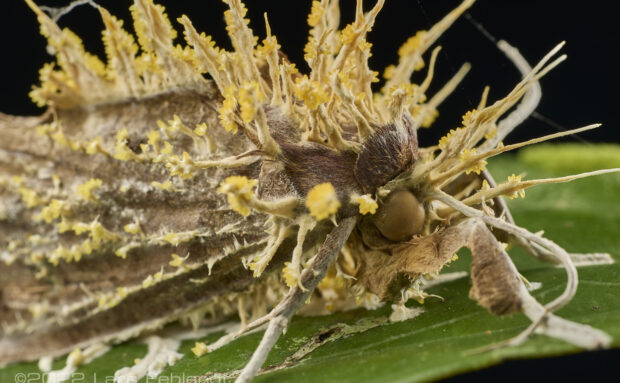
This Borneo moth is infected by a Cordyceps fungus, probably Cordyceps tuberculata(?). The parasitic fungi grow through the host and first form a subiculum, from which aggregate fruiting bodies, so-called stromata, then grow. All Cordyceps species are parasitic on arthropods…
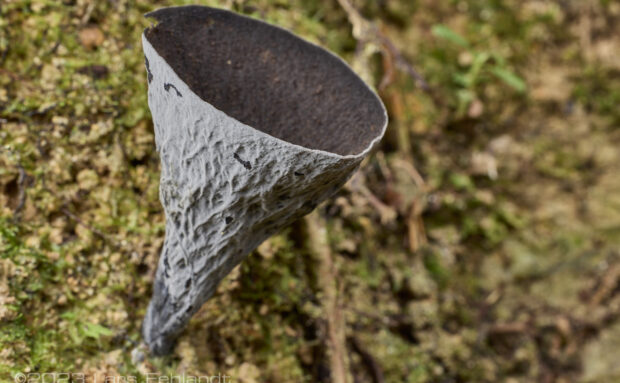
Unknown fungi species from Sout-Sarawak / Borneo, Comatoderma ssp.(?) or Podoscypha ssp.(?) related posts:
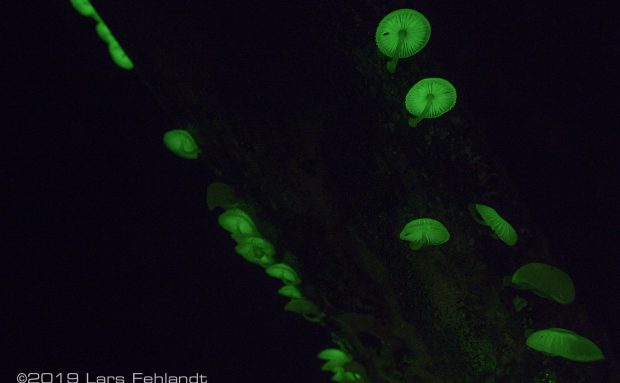
Bioluminescent mushrooms like this Mycena sp., of central Sarawak, begins to glow at night. With their own light they can attract insects, which could pick up spores on their bodies. With this behavior the Mushroom spread the spores over a…
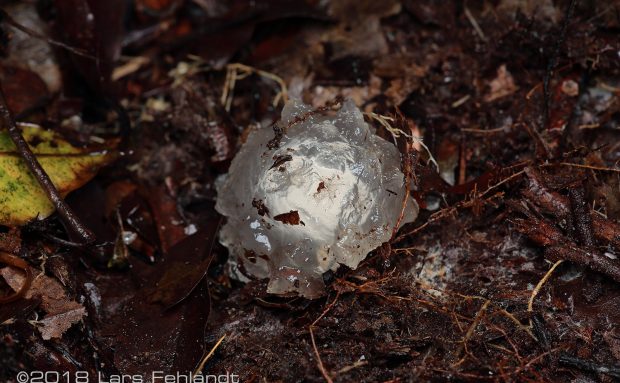
buffalo eye fungus or indonesian stalked puffball, Calostoma sp. of Borneo (Sarawak / Kalimantan) The Iban-tribe called them Kulat Mata Babi (Boar-Eye-Mushroom) or in Bahasa Kulat Mata Pelanduk (Mouse-Deer-Eye-Mushroom) (another local names: kulat mata lembu, mata kerbau), is an edible…
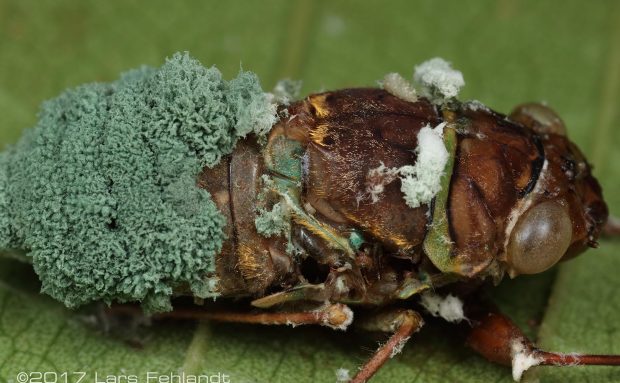
Cicada infected by a Cordyceps-fungus(?) of South-Sarawak/Borneo. related posts:
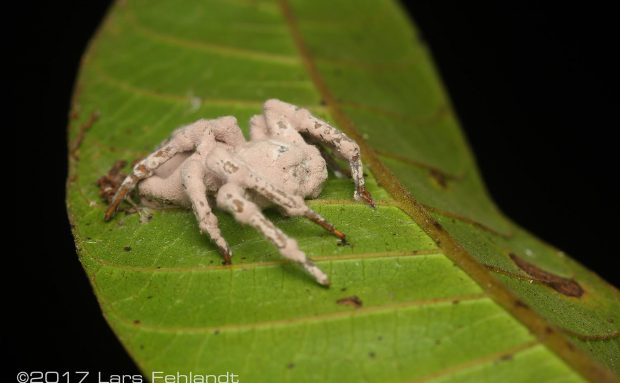
Infected by a Cordyceps-fungus of Central-Sarawak/Borneo – probably Paecilomyces lilacinus (Thom) related posts:
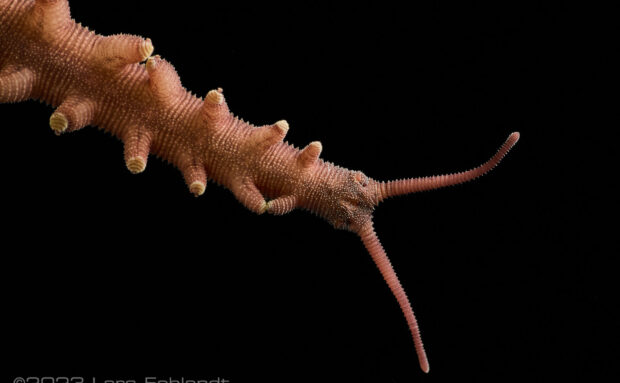
Onychophora commonly known as Velvet Worm, Eoperipatus sp. nov. of Sarawak / Borneo Velvet worms are hardly known from Borneo, there are only a handful of documented animals and even fewer animals that have been photographed. Most animals were labeled…
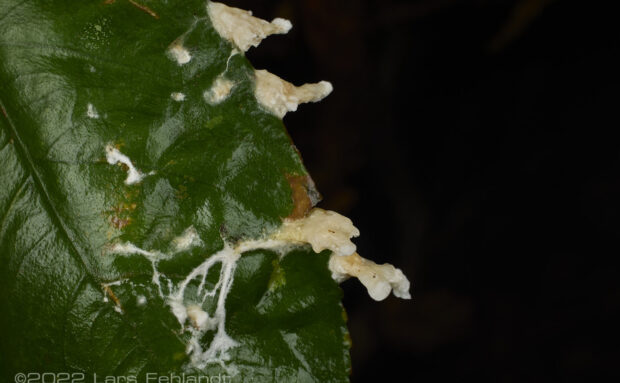
An unspecified slime mold from Sarawak / Borneo. The slime molds (Mycetozoa or Eumycetozoa) are a taxon of unicellular organisms that combine characteristics of both animals and fungi in their way of life, but do not belong to either group.…
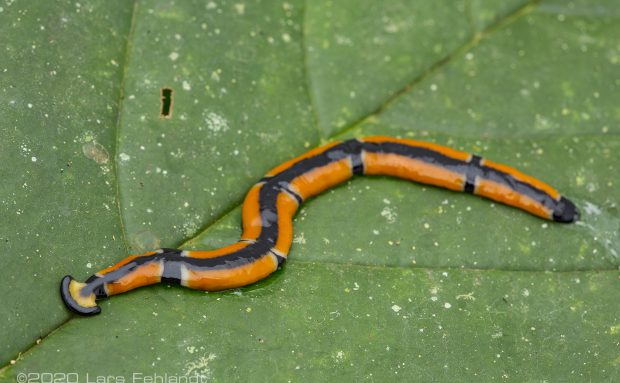
Hammerhead-Worm black&orange, Diversibipalium everetti (Moseley, 1875) of central Sarawak / Borneo related posts:
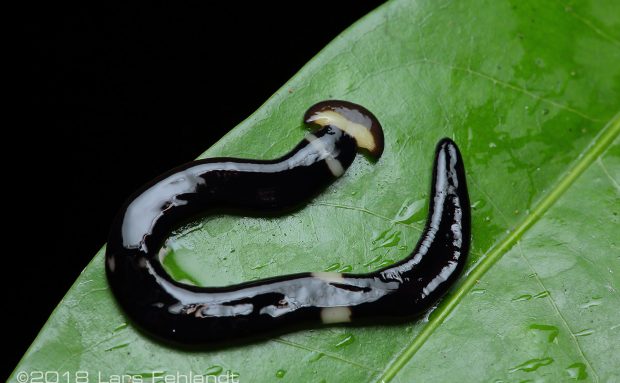
Hammerhead-Worm black&white, probably Bipalium genus of the Geoplanidae Stimpson, 1857 family. Found in south Sarawak near Kuching, 1100m ASL. related posts:
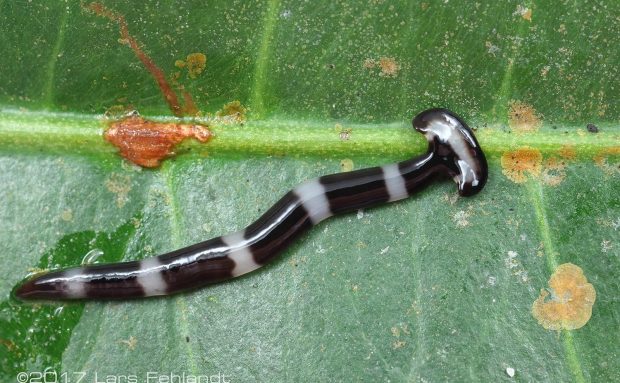
Hammerhead-Worm black&white, probably Bipalium genus of the Geoplanidae Stimpson, 1857 family. Found in Sarawak near Kuching, 20m ASL. related posts:
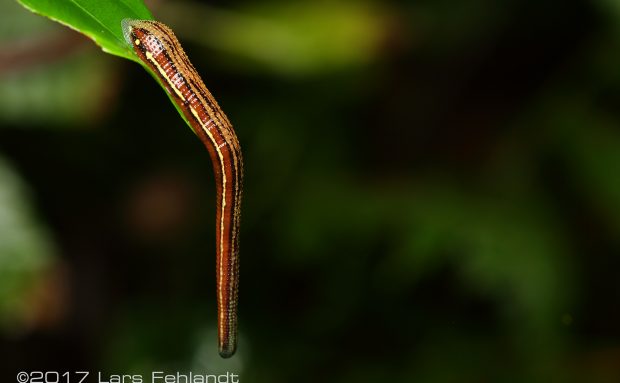
Tiger leech Haemadipsa picta Moore, 1929 related posts:
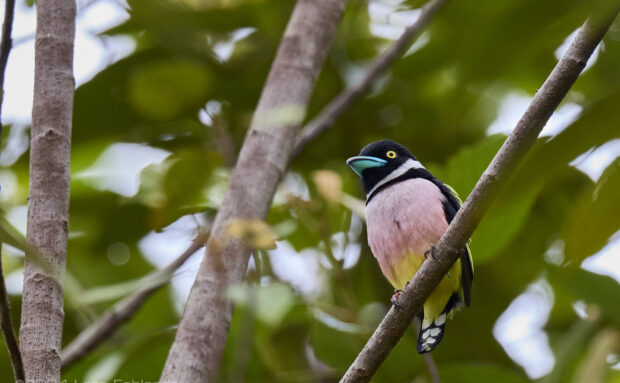
The black-and-yellow broadbill Eurylaimus ochromalus (Raffles, 1822) of central Sarawak / Borneo (1450m ASL) related posts:
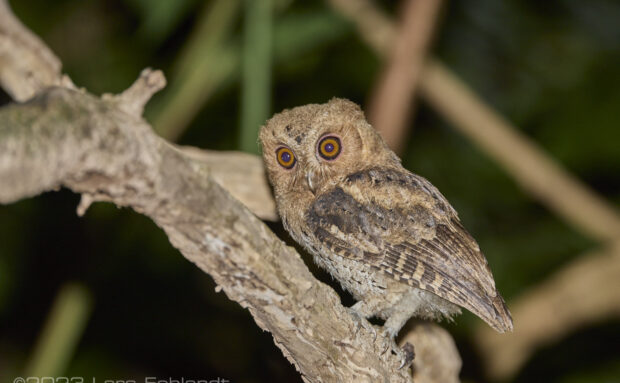
Sunda scops owl Otus lempiji (Horsfield, 1821) of Kuching / south Sarawak / Borneo related posts:
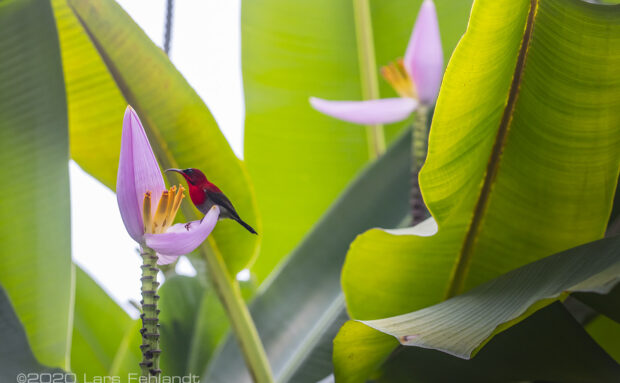
The Crimson sunbird Aethopyga siparaja (Raffles, 1822) of south Sarawak / Borneo related posts:
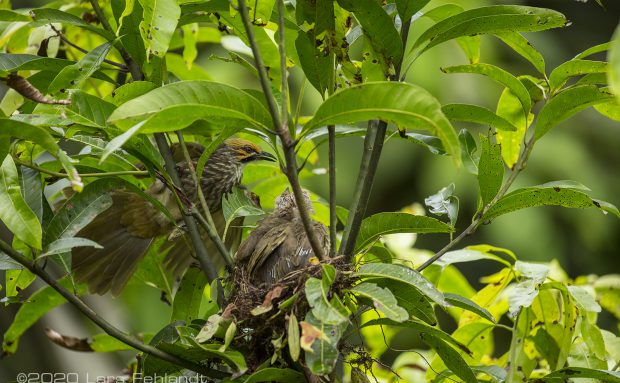
The straw-headed bulbul Pycnonotus zeylanicus (Gmelin, 1789) of central Sarawak / Borneo It is listed as critical endangered and is threatened by habitat loss and poaching. related posts:
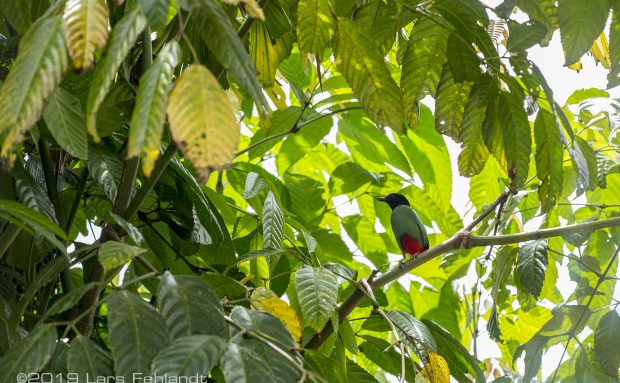
Hooded pitta, Pitta sordida (Statius Müller, 1776) of south Sarawak / Borneo – Pitta sordida mulleri (Bonaparte, 1850) related posts:
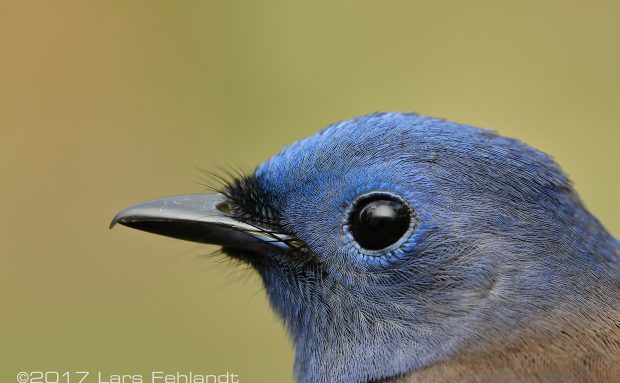
Female of black-naped monarch, Hypothymis azurea (Boddaert, 1783) from south Sarawak / Borneo related posts:

Great Lakes Bush Viper, Atheris nitschei TORNIER, 1902 of the Rwenzori Mountains / Uganda related posts:

Mountains of the Moon pygmy chameleon, Rhampholeon monteslunae HUGHES, BEHANGANA, TILBURY, DEHLING, KUSAMBA & GREENBAUM in HUGHES et al. 2024 of the Rwenzori Mountains / Uganda related posts:

Strange-horned chameleon, Kinyongia xenorhina (Boulenger, 1901) of the Rwenzori Mountains / Uganda related posts:

Klipspringer, Oreotragus oreotragus aureus (Zimmermann, 1783) of the Lake Mburo / Uganda related posts:

The tree pangolin or also known as the white-bellied pangolin, Phataginus tricuspis mabirae (Rafinesque, 1821) of Uganda – Bwindi The white-bellied pangolin is rare because it is severely threatened by illegal trade and habitat loss. Its scales are used in…

Mountain Gorilla, Gorilla beringei beringei Matschie, 1903 of the Rushegura family in Uganda – Bwindi Encountering mountain gorillas in Uganda is an extraordinary experience, offering a glimpse into the lives of one of the world’s most endangered species. Found primarily…